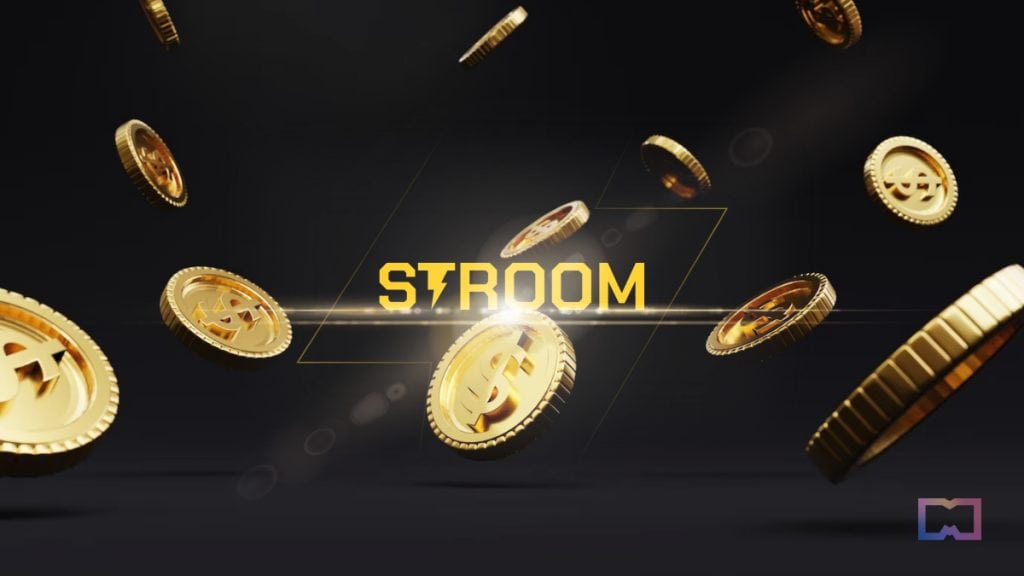Stroom Network Raises $3.5M in Seed Funding For Liquid Staking Protocol on Bitcoin Lightning Network


In Brief
Stroom Network, a liquid staking protocol on Bitcoin’s Lightning Network has raised $3.5 million in seed funding.
The round was led by Greenfield Capital, with participation from Lemniscap, No Limit Holdings, Cogitent Ventures and other VCs.
Stroom will use the seed funds to expand its team and launch the Liquid Staking Protocol on the Ethereum mainnet.

Stroom Network, a liquid staking protocol on Bitcoin’s Lightning Network has secured $3.5 million in seed funding.
Greenfield Capital led the seed round, with participation from Lemniscap, Ankr’s venture arm Mission Street, No Limit Holdings, Cogitent Ventures and other VCs.
According to Greenfield, Kyiv-based Stroom provides channel liquidity in BTC to the Lightning Network via its liquid staking protocol. This allows stakers to earn fees by using yield-bearing DeFi-enabled lnBTC tokens on the Ethereum platform, without having to operate a node.
Instead, a specialized node operator will handle the duties of routing payments through the Lightning Network. The node operator then takes a cut for the node operation through BTC liquidity via Stroom’s liquid staking protocol.
Greenfield explains that by providing BTC to Stroom, Bitcoin holders can participate in the growing channel liquidity market in the Lightning Network.
“The yield-bearing liquid staking token lnBTC is as composable as WBTC, and can therefore also act as e.g. collateral/security in financial derivatives, but has an intrinsic yield component that WBTC lacks. The result: more (diversified) yield for the BTC holders,” elaborated the VC firm.
Stroom’s foundation rests on the idea that the Lightning Network, initially designed to scale Bitcoin, represents a next-gen payment rail with real-time settlement, horizontal scalability, low fees, and instant payments.
In a Twitter thread, the company said that the Lightning Network still failed to hit mass adoption despite its benefits, due to the limited Total Value Locked (TVL) on the network.
“Our goal is to boost LN TVL by attracting Bitcoin-DeFi users to participate in Lightning Network. Stroom removes the necessity for them to choose between DeFi and LN and allows to utilize their BTC capital in both networks simultaneously,”
Stroom tweeted.
To achieve its goal, Stroom introduced Liquid Staking Tokens (LST), which it says is the operational principle behind the protocol.
Liquid Staking Protocol Explained
In a Twitter thread, Stroom unpacked LST, saying that they generate derivatives linked to the staked asset.
Typically, when assets are staked, they are held in a locked state for a defined period, preventing their trade or withdrawal during this time.
Liquid staking challenges this constraint by tokenizing staked assets to create derivatives, offering stakers greater flexibility. These liquid staking derivative tokens maintain a value equivalent to the amount staked by users.
“By utilizing these liquid staking derivative tokens, assets with comparable value can be employed in other DeFi protocols, all while earning staking rewards,” Stroom explained. “This framework incentivizes token holders to actively stake their original tokens, thus enhancing network stability and security. In case of Lightning Network, it also improves scalability and robustness.”
Stroom’s approach incorporates lnBTC (LN-staked Bitcoin Wrapped on the Ethereum Blockchain) within the DeFi ecosystem.
The Rise of Liquid Staking
Liquid staking protocols are gaining popularity as they allow stakers to put their assets to work without losing their staking rewards. They can also allow users to earn both staking rewards and additional yields from DeFi protocols.
Additionally, liquid staking protocols can bridge the gap between Proof-of-Stake networks and DeFi ecosystems. This allows staked assets to be used as collateral for borrowing or lending.
Over the past few months, liquid staking projects including Maverick Protocol and EtherFi have also successfully raised funds, indicating a growing demand for liquid staking.
Disclaimer
In line with the Trust Project guidelines, please note that the information provided on this page is not intended to be and should not be interpreted as legal, tax, investment, financial, or any other form of advice. It is important to only invest what you can afford to lose and to seek independent financial advice if you have any doubts. For further information, we suggest referring to the terms and conditions as well as the help and support pages provided by the issuer or advertiser. MetaversePost is committed to accurate, unbiased reporting, but market conditions are subject to change without notice.
About The Author
Cindy is a journalist at Metaverse Post, covering topics related to web3, NFT, metaverse and AI, with a focus on interviews with Web3 industry players. She has spoken to over 30 C-level execs and counting, bringing their valuable insights to readers. Originally from Singapore, Cindy is now based in Tbilisi, Georgia. She holds a Bachelor's degree in Communications & Media Studies from the University of South Australia and has a decade of experience in journalism and writing. Get in touch with her via [email protected] with press pitches, announcements and interview opportunities.
More articles

Cindy is a journalist at Metaverse Post, covering topics related to web3, NFT, metaverse and AI, with a focus on interviews with Web3 industry players. She has spoken to over 30 C-level execs and counting, bringing their valuable insights to readers. Originally from Singapore, Cindy is now based in Tbilisi, Georgia. She holds a Bachelor's degree in Communications & Media Studies from the University of South Australia and has a decade of experience in journalism and writing. Get in touch with her via [email protected] with press pitches, announcements and interview opportunities.

















































